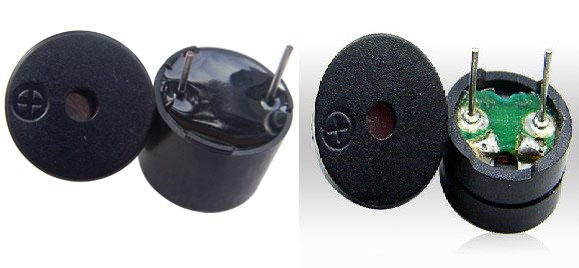Buzzer modules
Contents
[hide]Overview

A buzzer is an audio signaling device. Buzzers can be categorized into active and passive ones The schematic diagram of the module is as follows:

Introduction
As a type of electronic buzzer with integrated structure, buzzers, which are supplied by DC power, are widely used in computers, printers, photocopiers, alarms, electronic toys, automotive electronic devices, telephones, timers and other electronic products for voice devices. Buzzers can be categorized as active and passive ones (see the following picture). Turn the pins of two buzzers face up, and the one with a green circuit board is a passive buzzer, while the other enclosed with a black tape is an active one.

The difference between an active buzzer and a passive buzzer is:
An active buzzer has a built-in oscillating source, so it will make sounds when electrified. But a passive buzzer does not have such source, so it will not tweet if DC signals are used; instead, you need to use square waves whose frequency is between 2K and 5K to drive it. The active buzzer is often more expensive than the passive one because of multiple built-in oscillating circuits.
Features
1)Use an S8550 PNP transistor for drive
2)Convenient control by program
3)Working voltage: 3.3 - 5V; PCB size: 2.0 x 2.0 cm
4)With power light and indicator of digital signal output
Application
The module is usually used to make sounds via setting under some specific circumstance.
Resources
Test Experiment for Arduino![]()
Test Experiment for Raspberry Pi![]()